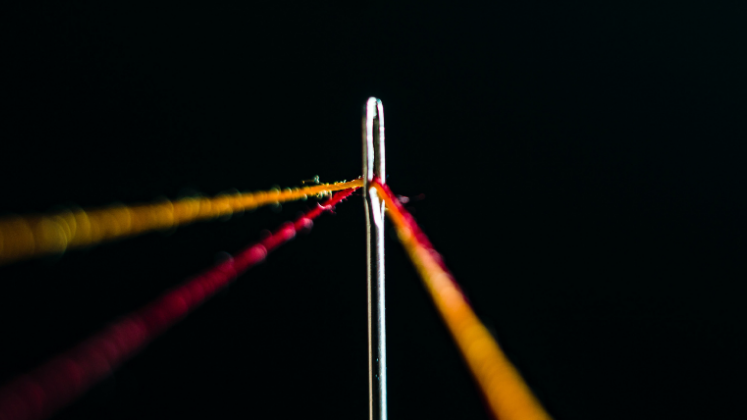In their previous post, Leo Tiokhin, Karthik Panchanathan, Paul Smaldino and Daniel Lakens argued that the predominant focus on scientists’ direct contributions has detrimental effects on collaboration, well-being, and scientific progress more broadly. In this post, drawing on examples from several competitive and selective environments, they adopt an evolutionary perspective to suggest that changing the scale for selection is a promising potential solution.
In our previous post, we illustrated how current criteria for evaluating scientists (such as number of first-authored publications or counts of citations) fail to capture the many indirect ways that scientists contribute to science (i.e., indirect effects). We then discussed the repercussions of ignoring indirect effects, including 1) failing to reward scientists who help others (and failing to penalize those who harm others), 2) increasing the intensity of competition between individual scientists, and 3) reducing the incentive to specialize in unique skills that complement others, making it more difficult for efficient divisions of labour to emerge.
In the second post, we focus on potential solutions. How should the general problem of accounting for indirect effects be approached? Is there a way to reduce the disconnect between what is in scientists’ self-interest and what is in the interest of the larger entities in which scientists are embedded?
For a first hint at a solution, we look to two other fields that have dealt with similar problems.
Accounting for indirect effects: lessons from animal husbandry and professional sports
Animal husbandry
Just as research institutions seek to select scientists to improve scientific outcomes, in domesticated livestock, breeders seek to select animals in a way that maximizes the amount of some commodity.
For example, in laying hens, breeders seek to maximize hens’ lifetime egg production. You might think that the best approach is to simply select the most productive individuals. The problem is that each hen’s productivity depends on the behaviours of other hens in their social environment, and the most productive hens are the nastiest ones: they feather-peck and cannibalize fellow group members (and it’s hard to produce eggs when you’re getting eaten alive). Because productive individuals achieve their productivity by harming others, counterintuitively, selecting the most productive hens can actually lead to lower total egg-yield.
In terms of both economics and animal-welfare, feather-pecking and cannibalism are severe problems. How can breeders solve these? Instead of selecting the most productive individuals, breeders can select individuals from the most productive groups (hens in the most productive coops are preferentially allowed to reproduce), which implicitly accounts for hens’ indirect effects on group members. In one application of this approach to poultry, mortality dropped from 68% to 9% in just a few generations, and laying increased from 91 to 237 eggs.
Professional sports
Sports team managers must evaluate which players have the largest positive effect on team performance. Superstar players with impressive individual performances (such as scoring many points) might seem like the natural choice. But superstars aren’t always the players that have the largest positive impact on a team, which is why evaluations of professional athletes rely on metrics that capture indirect effects.
In the National Hockey League (NHL), the “plus-minus” statistic provides information about a team’s performance when a player is on-versus-off the ice. Other metrics include involvements in goal-scoring attempts, shots blocked, plus-minus in number of attempts on goal (Corsi), and attempts to account for success due to luck (PDO).
despite the utility of these measures, it is also widely acknowledged that players affect team performance in ways that are “hidden” from metrics
The same is true of Major League Baseball (MLB). A player’s batting average and number of home runs are useful for capturing direct contributions, but are terrible for capturing indirect ones, where metrics like runs batted in (RBI), defensive runs saved (DRS), and value over replacement player (VORP) are more useful. There are even position-specific metrics, such as a pitcher’s earned-run average (ERA), because it often makes sense to judge different specialists based on different criteria.
And despite the utility of these measures, it is also widely acknowledged that players affect team performance in ways that are “hidden” from metrics, such as boosting morale.
Changing the level of selection: an overarching principle to account for indirect effects
Animal husbandry and professional sports illustrate an overarching principle for improving group-level outcomes: accounting for indirect effects by changing the level of selection, from lower levels (individuals) to higher ones (teams).
When thinking about institutional reform, shifting to a higher level of selection would promote cooperation by causing individuals within groups to have a shared fate: each individual’s success would become tied to that of group members, creating incentives for altruistic behaviour at the lower level. In evolutionary biology, multilevel-selection theory provides a formal framework for analysing such situations, where ‘individuals’ are structured into ‘groups’ (genes within cells, cells within individuals, individuals within groups) and selection operates at both individual and group levels. When the strength of between-group selection is sufficiently strong, evolution can favour within-group cooperation that leads to an advantage in between-group competition.
Just change the level of selection. Easy, right?
Nothing is easy in war.
– Dwight D. Eisenhower
Changing the level of selection has significant potential to improve science. It works in professional sports and animal husbandry; and throughout evolutionary history, in cases where natural selection at higher levels has dominated selection at lower ones, the resulting “superorganisms” (eukaryotic cells, eusocial insects) became so ecologically dominant that many other species had little hope.
We don’t just want large teams, but a mix of large-teams and independent scientists
Of course, superorganisms are not a predestined evolutionary outcome, and neither is large-scale cooperation in science, particularly in a system of recognition and rewards that largely ignores indirect effects.
The challenge is that the analogy between the above situations and science is imperfect.
In science, we don’t have a single outcome measure to maximize. We have to worry about Campbell’s Law, “the more any quantitative social indicator is used for social decision-making, the more subject it will be to corruption pressures and the more apt it will be to distort and corrupt the social processes it is intended to monitor.” We don’t just want large teams, but a mix of large-teams and independent scientists. We need to worry about crowding out intrinsic motivations with extrinsic ones. And, we must keep in mind that there is no free lunch when it comes to cooperation: you only get cooperation at lower levels by promoting competition at higher ones.
These challenges will be far from easy to overcome, to say the least.
But nothing is easy, especially nothing worth having, so we could do worse than to consider whether changing the level at which we select scientists—from individuals to the larger entities in which scientists are embedded—is a viable approach. Indeed, ongoing initiatives to broaden evaluation criteria are moving in related directions, for example, by assessing research integrity and making “room for everyone’s talent” at universities.
Because what’s the alternative?
The status quo?
A world in which we fail to reward the scientists who make the largest overall contributions, where there is insufficient large-scale cooperation, and where the generous scientists suffer while the selfish ones peck their way to success?
We can do better than that.
A version of this post first appeared as Why indirect contributions matter for science and scientists, on Medium.
Note: This article gives the views of the authors, and not the position of the LSE Impact Blog, nor of the London School of Economics. Please review our comments policy if you have any concerns on posting a comment below
Image Credit: Q.U.I via Unsplash.








